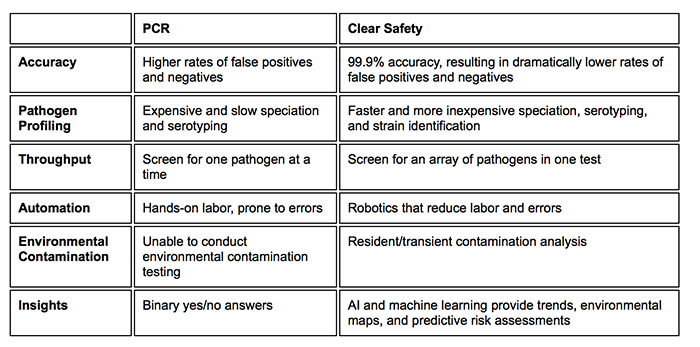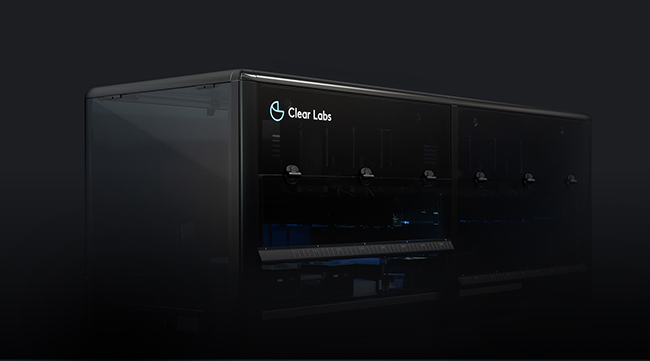Today Clear Labs announced the availability of its next-generation sequencing (NGS) platform, Clear Safety, for pathogen testing. Competing head-to-head with PCR, the product intends to bring NGS into the routine production environment. Clear Labs is launching the product at the IAFP Annual Meeting this week in Salt Lake City.
“Until the launch of Clear Safety, there was the duality between PCR and whole genome sequencing (WGS) where PCR was more applicable to routine testing and faster results,” says Mahni Ghorashi, co-founder of Clear Labs. “WGS is more expensive and slower, so the food industry has been using the technology as complementary until this time. This platform out competes PCR virtually on every level.”
Clear Safety was in the pilot phase only a couple of months ago when Ghorashi sat down with Food Safety Tech to give a brief overview of the technology. Now that the platform is officially out of pilot mode, it is accessible to all of the food industry, from third-party service labs to any food company that has an in-house lab. With less human labor involved, the platform reduces the potential for errors and does not require additional expertise. The process from sample to result has been simplified, and the bacterial enrichment and sample prep stages are identical to PCR, according to Ghorashi, who says that all a lab technician has to do is load the plates on the box and press “go”. Within 18 hours, test results are ready and can be accessed through a software platform.

In discussing the capabilities of Clear Safety versus PCR, Ghorashi named a few other key differentiators:
- Molecular profiling: The ability to drill down from species-level resolution to serotype to strain-level all in a single test within 24 hours (as opposed to today’s three-to-five-day timeframe)
- Better accuracy and more automation, reducing human error
- Multi-target analysis: The ability to run different kinds of pathogens at the same time
- Software: LIMS built specifically for food safety testing
Clear Safety’s first area of focus is Salmonella. Ghorashi estimates that 90% of the poultry market, 80% of the pet food market and half of all contract service labs have piloted the platform. Next year E.coli and Listeria testing capabilities will be rolled out.



